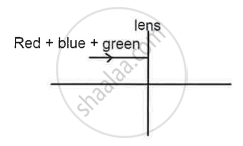Advertisements
Advertisements
प्रश्न
Distinguish between a real and a virtual image.
उत्तर
| Real image | Virtual image |
| 1. A real image is formed due to actual intersection of refracted (or reflected) rays | 1. A virtual image is formed when the refracted (or reflected) rays meet if they are produced backwards |
| 2. 2 A real image can be obtained on a screen | 2. 2. A virtual image cannot be obtained on a screen |
| 3. 3. A real image is inverted with respect to the object. | 3. 3. A virtual image is erect with respect to the object |
APPEARS IN
संबंधित प्रश्न
Study the diagram shown in Fig. 5.56
Complete the diagram to show the formation of image A’B’ of the object AB of same size.
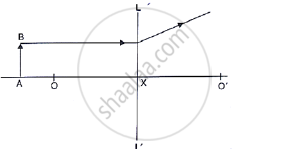
Study the diagram shown in the following Figure.
Name the lens LL’ and draw its outline.

Study the diagram shown in Fig. 5.56
Where is the image formed?
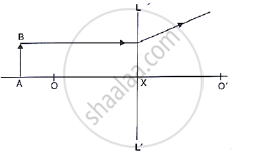
Study the diagram shown in Fig. 5.56
what are the two other characteristics of the image?
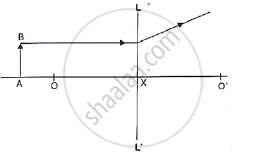
The diagram given below shows the position of an object OA in relation to a converging lens L whose foci are at F1 and F2.
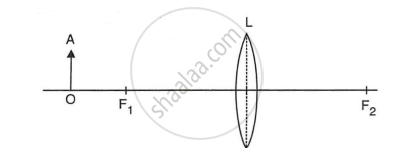
- Draw two rays to locate the position of the image.
- State the position of the image with reference to the lens.
- Describe three characteristics of the image.
- Describe how the distance of the image from the lens and its size change as the object is moved towards F1.
Fig. shows two rays of light Op and OQ coming from an object at the bottom of a pond, incident on the water surface.
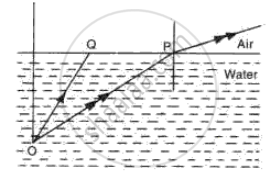
(a) Mark on the diagram
(i) The angle of incidence of ray OP,
(ii) The angle of refraction of ray Op,
(iii) The position of image of the object as seen from above.
(iv) An approximate path of the ray OQ.
(b) Explain, why do the rays of light change directions on passing from water to air.
(c) A fish in water sees everything outside the water by rays of light entering its eye in a small cone of light. Draw a diagram and explain how does this happen.
How will you differentiate between a convex and a concave lens by looking at a printed page?
The diagram showed a lens as a combination of one glass block and two prisms. Complete the ray diagram and show the part of the incident ray AB after passing through the lens.
(i) Name of the lens formed by the combination.
(ii) What is the line XX’ called?
(iii) Mark the focus F.

Complete the following diagram and state what happens to the ray of light after refraction through the lens.

Mixture of red + blue + green is passed through a convex lens as shown in the diagram below. State whether the ray passes through a single point or through different points on the principal axis after refraction.
